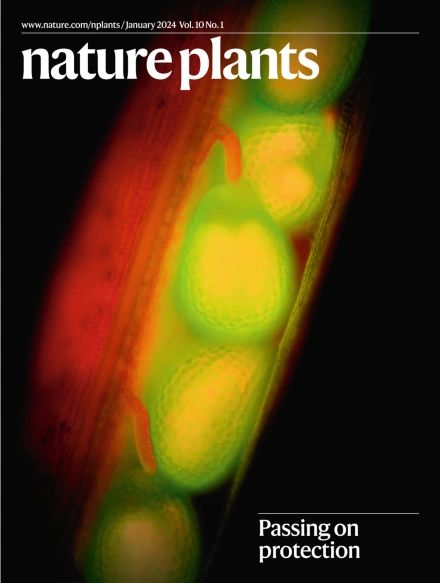植物如何使表面脂质适应环境变化
IF 15.8
1区 生物学
Q1 PLANT SCIENCES
引用次数: 0
摘要
角质层蜡是植物与其环境之间最外层的疏水屏障。蜡质组分的比例随着环境条件的变化,通过烷烃和醇生成途径的核心分流机制发生变化。特别是,高水平的烷烃有助于减少干旱期间的水分损失,而高水平的1-醇促进高温下的水分蒸发。本文章由计算机程序翻译,如有差异,请以英文原文为准。


How plants adapt surface lipids to environmental changes
Cuticular wax is the outermost hydrophobic barrier between plants and their environment. The ratio of wax components changes through the core shunt mechanism of the alkane-forming and alcohol-forming pathways in response to environmental conditions. In particular, higher levels of alkanes help to reduce water loss during drought, whereas increased levels of 1-alcohols promote water evaporation under high temperatures.
求助全文
通过发布文献求助,成功后即可免费获取论文全文。
去求助
来源期刊

Nature Plants
PLANT SCIENCES-
CiteScore
25.30
自引率
2.20%
发文量
196
期刊介绍:
Nature Plants is an online-only, monthly journal publishing the best research on plants — from their evolution, development, metabolism and environmental interactions to their societal significance.
 求助内容:
求助内容: 应助结果提醒方式:
应助结果提醒方式:


